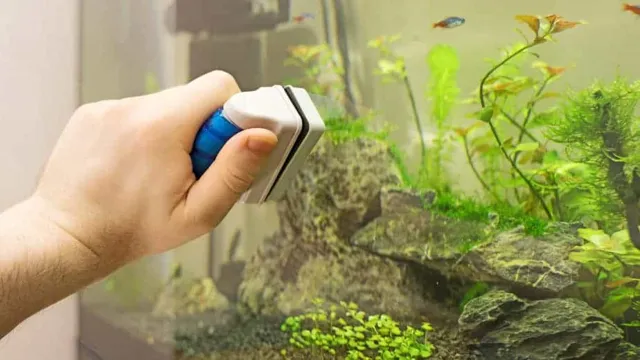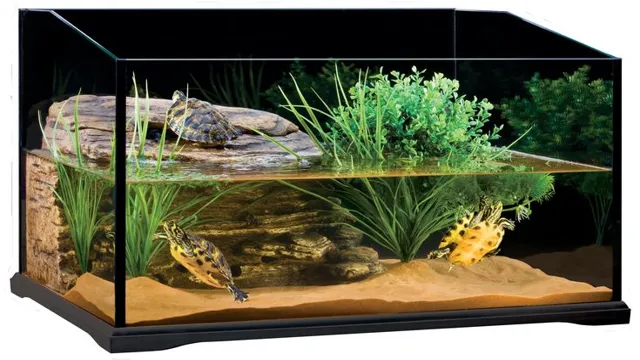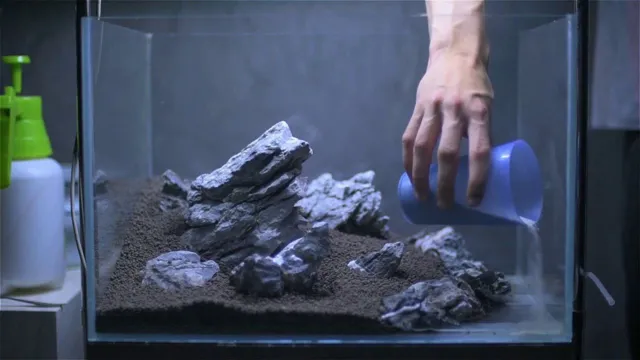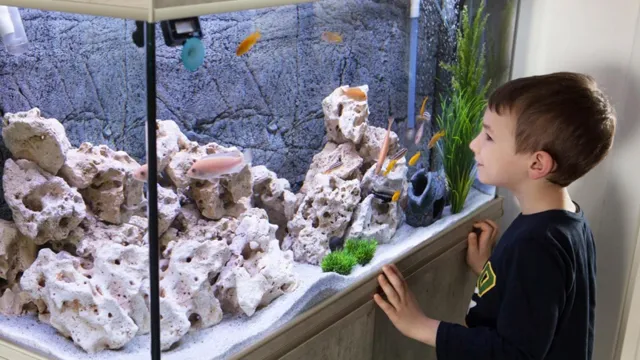Are you looking to maintain a healthy freshwater aquarium? If so, you’ve come to the right place! Keeping your aquarium in pristine condition can seem like a daunting task, but with a little knowledge and effort, it can be easy and enjoyable. Think of your aquarium like a mini-ecosystem; it requires balance and care to thrive. Much like how humans need a clean and healthy environment to live in, fish and other aquatic creatures need one as well.
Neglecting your aquarium can result in sick fish, algae blooms, and an unappealing look. But fear not! With a few helpful tips and tricks, you can keep your aquatic friends happy and healthy. So, let’s dive in and explore the world of maintaining a healthy freshwater aquarium!
Understanding Water Chemistry
Maintaining the best freshwater aquarium requires a good understanding of water chemistry. Water parameters such as pH, ammonia, nitrite, and nitrate levels must be monitored regularly to ensure that they remain within safe levels for the fish and other aquatic creatures. It’s crucial to use a high-quality water testing kit to measure these parameters accurately.
If the water is found to be outside of the recommended levels, water changes should be done promptly to reduce the risk of harm to the aquarium’s inhabitants. Additionally, it’s essential to establish a regular maintenance routine that includes cleaning the tank and filter, replacing old filter media, and removing any debris. By staying on top of water chemistry and tank maintenance, aquarium owners can create a healthy environment for their underwater pets, ensuring they thrive for years to come.
Keep pH, Nitrogen, and Ammonia Levels Balanced
Understanding water chemistry is crucial to keeping the pH, nitrogen, and ammonia levels balanced in your aquatic environment. You see, these elements work together to ensure that the water conditions are hospitable to the plants and animals that call it home. If the pH level is too high or too low, it can have harmful consequences on the living organisms in the water.
Similarly, high levels of nitrogen or ammonia can lead to unhealthy water conditions. That’s why it’s essential to regularly test the water chemistry and make adjustments as needed. Think of it like a recipe: just as you need the right ingredients in the right amounts to make a delicious meal, you need the right balance of pH, nitrogen, and ammonia levels to create a healthy aquatic environment.
By understanding water chemistry, you can maintain an optimal environment for your aquatic friends to thrive in.

Use Proper Filtration Systems
Proper Filtration Systems Understanding water chemistry is crucial for maintaining a safe and healthy swimming pool. One of the key aspects of water chemistry is ensuring that your pool’s filtration system is working properly. Proper filtration helps to remove contaminants such as dirt, debris, and bacteria from the water, which can cause health problems and damage your pool’s surfaces.
A high-quality filtration system can also improve water circulation and reduce the need for chemicals in your pool. It’s important to choose the right type of filtration system for your pool, based on factors such as pool size, usage levels, and water chemistry. A professional pool technician can help you choose the right system and ensure that it’s installed and maintained properly.
With the right filtration system, you can enjoy clear, clean pool water all season long.
Maintaining Aquarium Equipment
If you’re looking to maintain the best freshwater aquarium, you need to make sure your aquarium equipment is properly taken care of. The first thing you should do is clean your filters. Filters can become clogged with debris and waste, which can impair their functionality and reduce water quality.
To clean your filters, simply remove them from the aquarium and rinse them under running water. Be careful not to scrub them too hard because this can damage the filter media. Additionally, you should check your water parameters regularly and adjust your equipment accordingly.
This means monitoring your pH levels, temperature, and any other relevant parameters using a test kit. Finally, regularly check your aquarium lights to make sure they’re functioning properly. This will help ensure that your plants and fish get the light they need to thrive. (See Also: How to Fix Aquarium Internal Filter: Step-by-Step Guide for Beginners)
By following these tips, you’ll be well on your way to having the best freshwater aquarium possible.
Regular Cleaning of Tank and Equipment
Keeping your aquarium clean is crucial for maintaining the health and wellbeing of your fish and other aquatic creatures. One of the most important aspects of cleaning your aquarium is regularly cleaning the tank and equipment. This includes cleaning the gravel and changing the water, as well as cleaning the filter and any other equipment such as heaters, air pumps, and decorations.
Neglecting to clean your tank and equipment can lead to a buildup of harmful bacteria and other toxins, which can make your fish sick or even kill them. By taking the time to regularly clean your aquarium, you can help ensure that your fish are healthy and happy, and that your aquarium stays looking beautiful. So next time you’re doing your weekly maintenance routine, don’t forget to give your tank and equipment a good clean!
Check and Replace Filters
Maintaining aquarium equipment is crucial to the health and happiness of your fish. One of the most important maintenance tasks you can do is check and replace filters regularly. Filters help to remove harmful substances from the water, keeping it clean and clear for your aquatic friends.
Over time, filters can become clogged with debris and lose their effectiveness. This is why it’s important to clean or replace them every four to six weeks. Always make sure to read the manufacturer’s instructions for your particular filter before attempting any maintenance.
Neglecting to maintain your aquarium filters can lead to poor water quality and even harm to your fish. So, be sure to regularly check and replace filters to keep your aquarium thriving.
Perform Water Changes Regularly
Maintaining aquarium equipment requires consistent effort and attention to detail, and one important aspect of this is performing water changes regularly. Water changes refer to removing a portion of the aquarium’s water and replacing it with clean, fresh water. This process helps to eliminate waste and debris, reduce levels of harmful chemicals, and replenish essential nutrients.
Depending on the size and type of aquarium, water changes may need to be done weekly, bi-weekly, or monthly. Neglecting to perform water changes can lead to a build-up of toxins and harmful bacteria, which can cause harm to aquatic life. By staying on top of water changes, aquarium enthusiasts ensure the longevity and health of their aquarium inhabitants.
So, don’t forget to make time for regular water changes as part of your aquarium maintenance routine.
Choosing and Feeding Fish
When it comes to maintaining the best freshwater aquarium, choosing and feeding the right fish is crucial. Firstly, it’s essential to choose fish that are compatible with your tank’s size and water parameters. Overcrowding can lead to stress, diseases, and poor water quality.
Also, make sure to feed your fish a balanced diet that meets their nutrition requirements. Overfeeding can cause uneaten food to decompose and produce harmful toxins, while underfeeding can lead to malnourishment. It’s best to feed small amounts of food several times a day instead of one large feeding.
Additionally, consider adding live or frozen foods, such as brine shrimp or bloodworms, to provide variety and enhance your fish’s health. By choosing and feeding your fish correctly, you can ensure a healthy and thriving aquarium.
Research the Best Fish Species for Your Tank
When it comes to setting up your own fish tank, choosing the right fish species is crucial for the health and longevity of your aquatic pets. Not all fish are created equal, and some species require very specific environments and care practices to thrive. Before deciding on the fish you want to keep, research the specific requirements of each species, including their water temperature, filtration needs, and diet. (See Also: How to Check Water Hardness in Aquarium: A Step-by-Step Guide)
Some breeds, like bettas, require a heater to keep their water temperature stable, while others need ample space to swim and thrive. Feeding your fish is equally important – different species may require different types of food, and overfeeding can lead to health problems for your fish and excess debris in your tank. Ultimately, with a bit of research and care, you can create a thriving ecosystem that will bring you joy and beauty for years to come.
Feed Your Fish a Balanced Diet
If you want your fish to thrive, you need to provide them with a balanced diet. There are many different types of fish food available, from flakes and pellets to frozen and live foods. It’s important to choose a food that is appropriate for your fish species and their dietary needs.
For example, herbivores like many species of freshwater fish require a diet rich in plant material, while carnivorous species like many saltwater fish require protein-rich foods. You can also supplement your fish’s diet with treats like freeze-dried shrimp or bloodworms. Just be sure to feed them in moderation to avoid overfeeding, which can lead to health problems like obesity.
By providing your fish with a varied and balanced diet, you can help ensure that they stay healthy and happy for years to come.
Preventing Diseases and Illnesses
Maintaining a healthy freshwater aquarium is essential to prevent diseases and illnesses in the fish. One way to do this is by ensuring a good filtration system that keeps the water clean and clear of harmful bacteria. It is also important to monitor the water temperature regularly and to make sure it stays within the appropriate range for the specific type of fish in the tank.
Overcrowding the tank with too many fish can also lead to stress and the spread of diseases, so it’s important to manage the number of fish in the tank carefully. Feeding the fish a balanced diet and removing any uneaten food can also help prevent the buildup of harmful bacteria in the tank. Finally, it’s recommended to perform regular water changes to maintain a healthy environment for the fish.
By following these tips and regularly monitoring the aquarium, fish owners can help prevent diseases and keep their fish healthy and happy.
Quarantine New Fish Before Adding Them
When it comes to adding new fish to your aquarium, it is crucial to quarantine them first. This step is often overlooked, but it can help prevent the spread of diseases and illnesses to your existing fish. Quarantining new fish allows you to observe them for any signs of illness or parasites before introducing them to your main tank.
It also gives the new fish time to adjust to the new environment without the stress of competition from other fish. Setting up a separate quarantine tank with similar water conditions to your main tank is the best approach. This can be a simple setup like a 10-gallon tank with a heater and filter.
By taking this extra precaution, you can ensure that your existing fish remain healthy and happy while introducing new members into your aquatic family.
Monitor for Symptoms of Common Fish Diseases
As a fish owner, it’s important to monitor your aquatic pets to prevent common diseases and illnesses. You can keep an eye on their behavior and look for physical signs such as lesions, discoloration, and lethargy. Two common issues that may arise are ich and fin rot, which can be caused by poor water quality or stress.
If you notice any symptoms, it’s best to take action quickly, as these diseases can spread to other fish in your tank. Regular water changes and proper filtration can also help prevent these issues. By being proactive and staying vigilant, you can help keep your fish happy and healthy for years to come. (See Also: How to Make a Driftwood Tree Aquarium for Your Home Décor)
Conclusion
In conclusion, maintaining the best freshwater aquarium is a delicate balance between creating a natural habitat for your aquatic pets and keeping their environment clean and healthy. It requires dedication, patience, and a willingness to learn and adapt. It’s like being a high-wire artist, balancing the delicate ecosystem of your aquarium while avoiding the pitfalls of overfeeding, overstocking, and neglect.
But with the right tools, knowledge, and attitude, you can create a colorful and thriving underwater world that will bring joy and happiness to both you and your fishy friends. So, keep calm, carry on, and keep your aquarium sparkling clean and beautiful, and you’ll be well on your way to becoming the ultimate fish whisperer!”
FAQs
What is the best filter for a freshwater aquarium?
The best filter for a freshwater aquarium is a canister filter. It provides excellent mechanical, chemical, and biological filtration.
How often should you change the water in a freshwater aquarium?
You should change 10 to 20 percent of the water in your freshwater aquarium every week. This helps maintain water quality and keeps your fish healthy.
What kind of fish can live in a freshwater aquarium?
There are many different kinds of fish that can live in a freshwater aquarium. Some popular ones include neon tetras, guppies, angelfish, and cichlids.
How do you maintain a stable pH in a freshwater aquarium?
To maintain a stable pH in a freshwater aquarium, you should test the water regularly and adjust it as needed with pH buffers. Adding driftwood or almond leaves can also help stabilize pH.
Can you use tap water in a freshwater aquarium?
Yes, you can use tap water in a freshwater aquarium, but you should treat it with a water conditioner first to remove chlorine, chloramines, and heavy metals.
How do you prevent algae growth in a freshwater aquarium?
To prevent algae growth in a freshwater aquarium, you should limit the amount of light, reduce the amount of nutrients in the water, and perform regular water changes and tank cleanings.
What temperature should a freshwater aquarium be kept at?
The temperature for a freshwater aquarium should be between 72 and 78 degrees Fahrenheit, depending on the type of fish you have. It’s important to use a heater to maintain a consistent temperature.







